Seasonal Produce Spotlight: The Health Benefits of Cauliflower
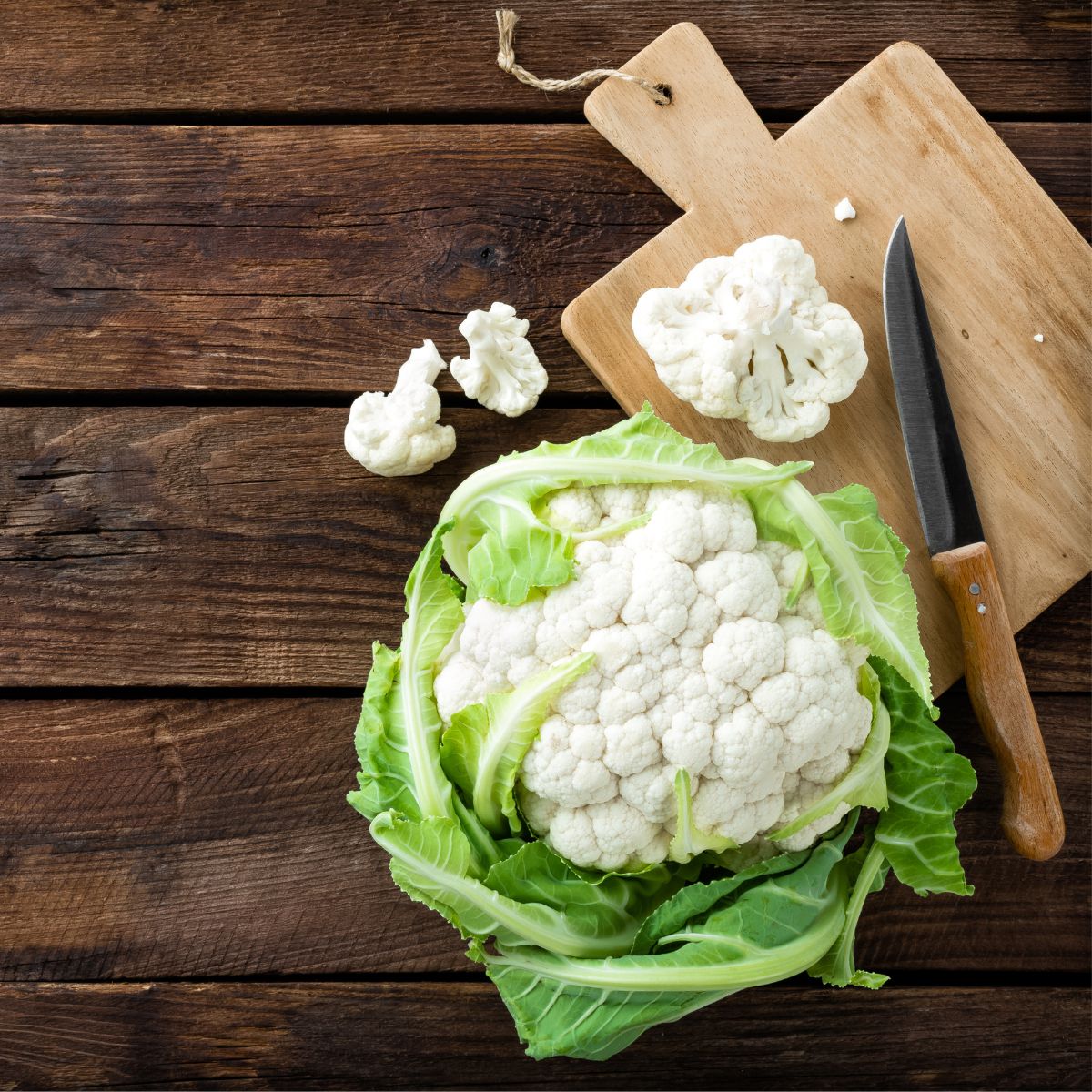
How to Eat Cauliflower and How Much It Costs.
There’s a reason why cauliflower is everywhere these days. It’s so versatile! It’s a vegetable and a carbohydrate substitute all rolled into one. While I was late in being convinced of the merits of broccoli, I’ve always loved cauliflower and am glad to see it get its time in the spotlight. Besides, the health benefits of cauliflower are so numerous, what’s not to love?
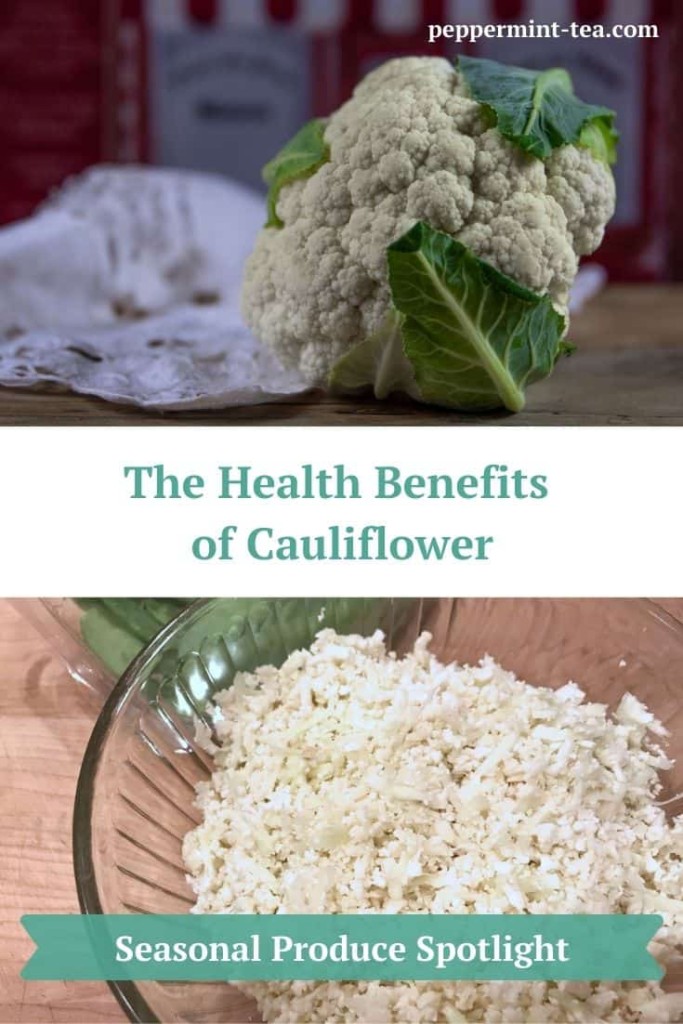
What is Cauliflower
Cauliflower is a cruciferous vegetable, which means that it belongs to the Brassica family2. Other cruciferous vegetables include cabbage, bok choy, kale, broccoli and Brussels sprouts. Cauliflower is a cool weather crop and is in season in the spring and fall3 – before it gets too hot and after the heat of summer has passed. An interesting fact is that the white part of the plant that we eat is called a “curd3,” which makes sense because that’s the word that always comes to mind when I see it.
Nutrients in Cauliflower
The nutrients in cauliflower are numerous. In fact, it’s ranked 24 on a list of what the CDC calls Powerhouse Fruits and Vegetables. These fruits and vegetables provide, “on average, 10 percent or more daily value per 100 kcal of 17 qualifying nutrients.” Those nutrients are potassium, fiber, protein, calcium, iron, thiamin, riboflavin, niacin, folate, zinc, and vitamins A, B6, B12, C, D, E, and K1.
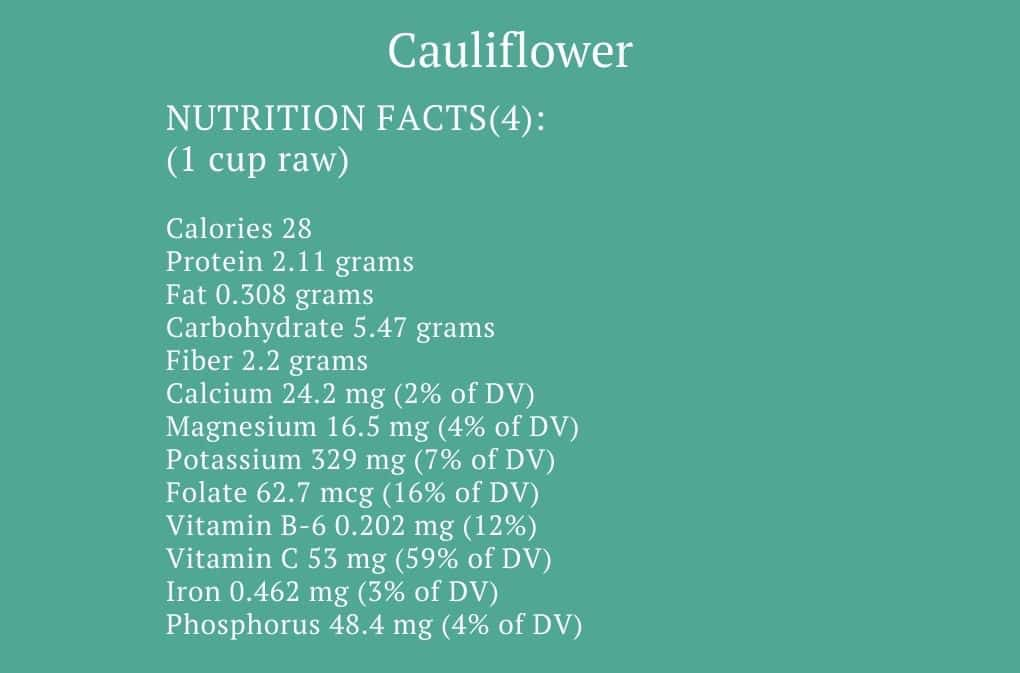
Health Benefits of Cauliflower
Of course, the fact that cauliflower is low in net carbs is why it has suddenly surged in popularity recently. Because it’s so versatile, it can easily be used as a substitute for rice, mashed potatoes and even pizza crust. While I’m more of a fan of making healthy eating part of your lifestyle and not a huge supporter of any so-called “diet,” the fact is that many of us eat way too many starchy foods that offer little to no nutritional value. One way of addressing the many health problems that can be caused by this is portion control. Another, and the main way that I’ve found back to better health, is adding more nutrient-dense foods like cauliflower and reducing the foods that don’t add much benefit.
One of the reasons that cauliflower is so low in net carbs is that it’s high in fiber. Eating more fiber helps to lower our risk for coronary heart disease, stroke, diabetes, obesity and gastrointestinal disease5. The primary way of figuring out net carbs in a food is to subtract the amount of fiber from the amount of carbohydrates. That means that our example above of 1 cup of raw cauliflower has approximately 3.2 grams of net carbs.
Besides being high in fiber, the number of other nutrients associated with vegetables in the Brassica family2 mean that there are many additional health benefits of cauliflower as well. Studies show that the vegetables in this family help prevent oxidative stress, stimulate the immune system and decrease the risk of cancer6. According to the Cleveland Clinic, these include breast, pancreatic, bladder, lung, prostate and colon cancers2.
How to Prepare Cauliflower
Here are some of the healthiest ways that you can prepare cauliflower.
- Steam it to have as a side dish alone or with other vegetables.
- Roast it to have as a side dish alone or with other vegetables.
- Sauté it in olive or avocado oil in a stir-fry.
- Raw. Even as a child, cauliflower was one of the few vegetables that I would willingly eat raw because it was somewhat crunchy. You can eat it raw by itself, on salads or simply dipped in some type of sauce or dressing.
Other, and probably more exciting, ways to prepare cauliflower include the following.
- Cauliflower rice. This can be frozen flat in baggies and easily thawed by steaming it or placing in a covered sautépan and stirring frequently.
- Mashed cauliflower – A delicious substitute for mashed potatoes.
- Cauliflower pizza crust
Budget Benefits of Cauliflower
If you’re buying whole, fresh cauliflower, the most budget-friendly way to do it is to buy it in-season. That again is in the spring or fall. You can usually find a large head at that time for under $3. If it’s not in-season, it usually costs between $3-$4. Depending on how it’s fixed, I usually get 4-5 servings out of a large head.
If you’re trying to limit chemical exposure to your food while also keeping grocery costs as low as possible, it’s important to know that cauliflower is on the Environmental Working Group’s Clean Fifteen list. That means that its pesticide-load is low and doesn’t necessarily need to be organic.
One of the biggest questions I had when I started making cauliflower rice was whether it was cheaper or just as cheap to buy the pre-riced fresh or frozen versions rather than to make it from a head. While you can buy it frozen cheaper in bulk at a shopping club, unless it’s on sale, you will usually get more for your money if you buy a whole head fresh and mince it yourself.
If having the time or energy to cut up the cauliflower seems to be a challenge for you, you can easily prep it over the weekend and then quickly mince it when you’re ready for it. You can also mince it when you do the rest of your food prep for the week and have it ready as a quick and easy convenience food whenever you need it.
Bottom Line on the Health Benefits of Cauliflower
However you prepare it, cauliflower is a great budget-friendly vegetable to have as part of your regular eating habits. The nutritional value packed into one head will always make it one of the healthiest foods available, whether it’s part of the latest diet trend or not.
Sources
- Centers for Disease Control and Prevention. Defining Powerhouse Fruits and Vegetables: A Nutrient Density Approach. https://www.cdc.gov/pcd/issues/2014/13_0390.htm#table2_down
- Cleveland Clinic. Crunchy and Cruciferous: You’ll Love This Special Family of Veggies. https://health.clevelandclinic.org/crunchy-and-cruciferous-youll-love-this-special-family-of-veggies/
- University of Illinois Extension. Watch Your Garden Grow: Cauliflower. https://web.extension.illinois.edu/veggies/cauliflower.cfm
- USDA. Food Data Central. https://fdc.nal.usda.gov/fdc-app.html#/food-details/1103345/nutrients
- Anderson JW, Baird P, Davis RH Jr, Ferreri S, Knudtson M, Koraym A, Waters V, Williams CL. Health benefits of dietary fiber. Nutr Rev. 2009 Apr;67(4):188-205. doi: 10.1111/j.1753-4887.2009.00189.x. PMID: 19335713. https://pubmed.ncbi.nlm.nih.gov/19335713/
- Kapusta-Duch J, Kope? A, Piatkowska E, Borczak B, Leszczy?ska T. The beneficial effects of Brassica vegetables on human health. Rocz Panstw Zakl Hig. 2012;63(4):389-95. PMID: 23631258. https://pubmed.ncbi.nlm.nih.gov/23631258/


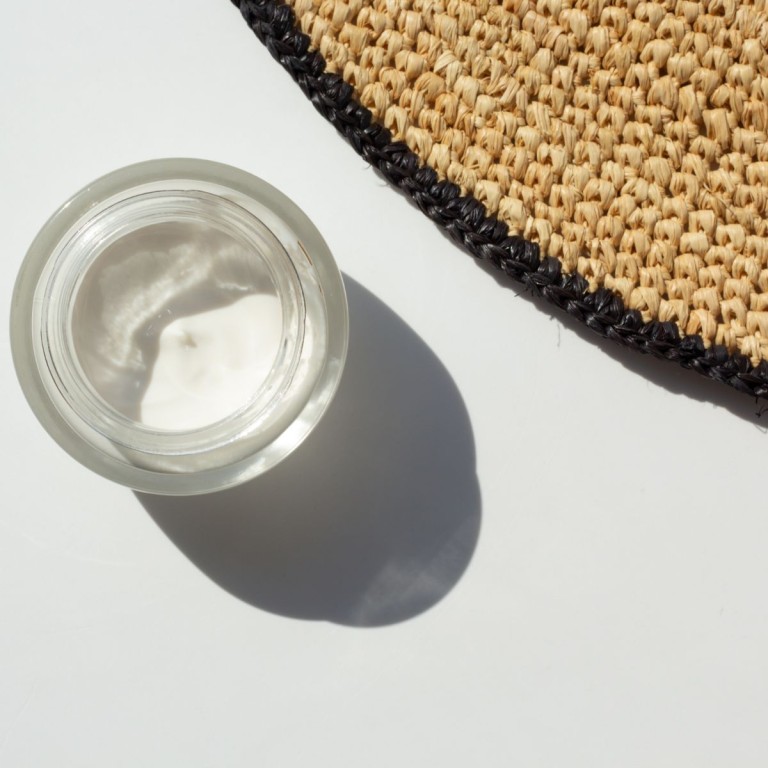

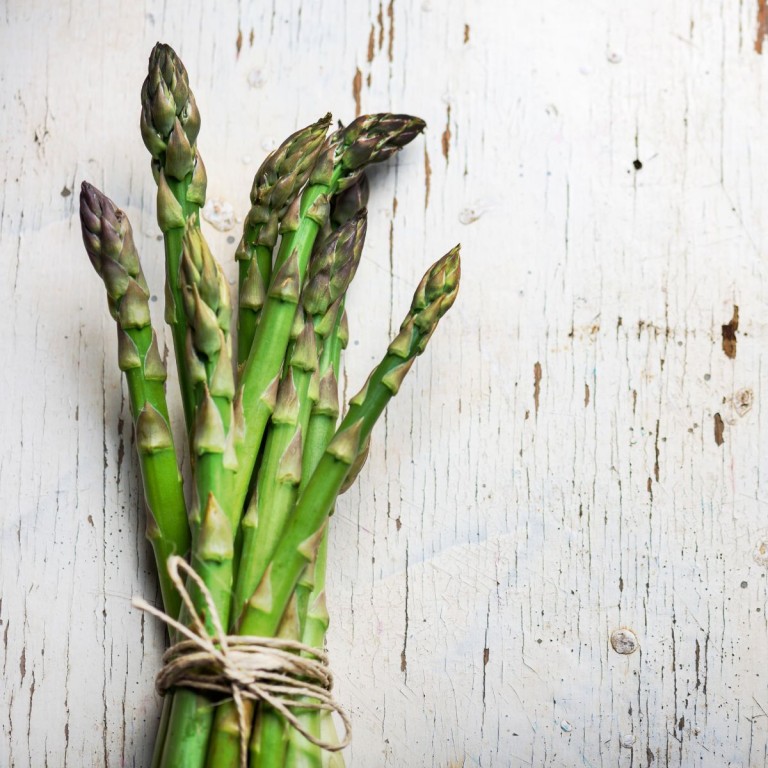


One Comment